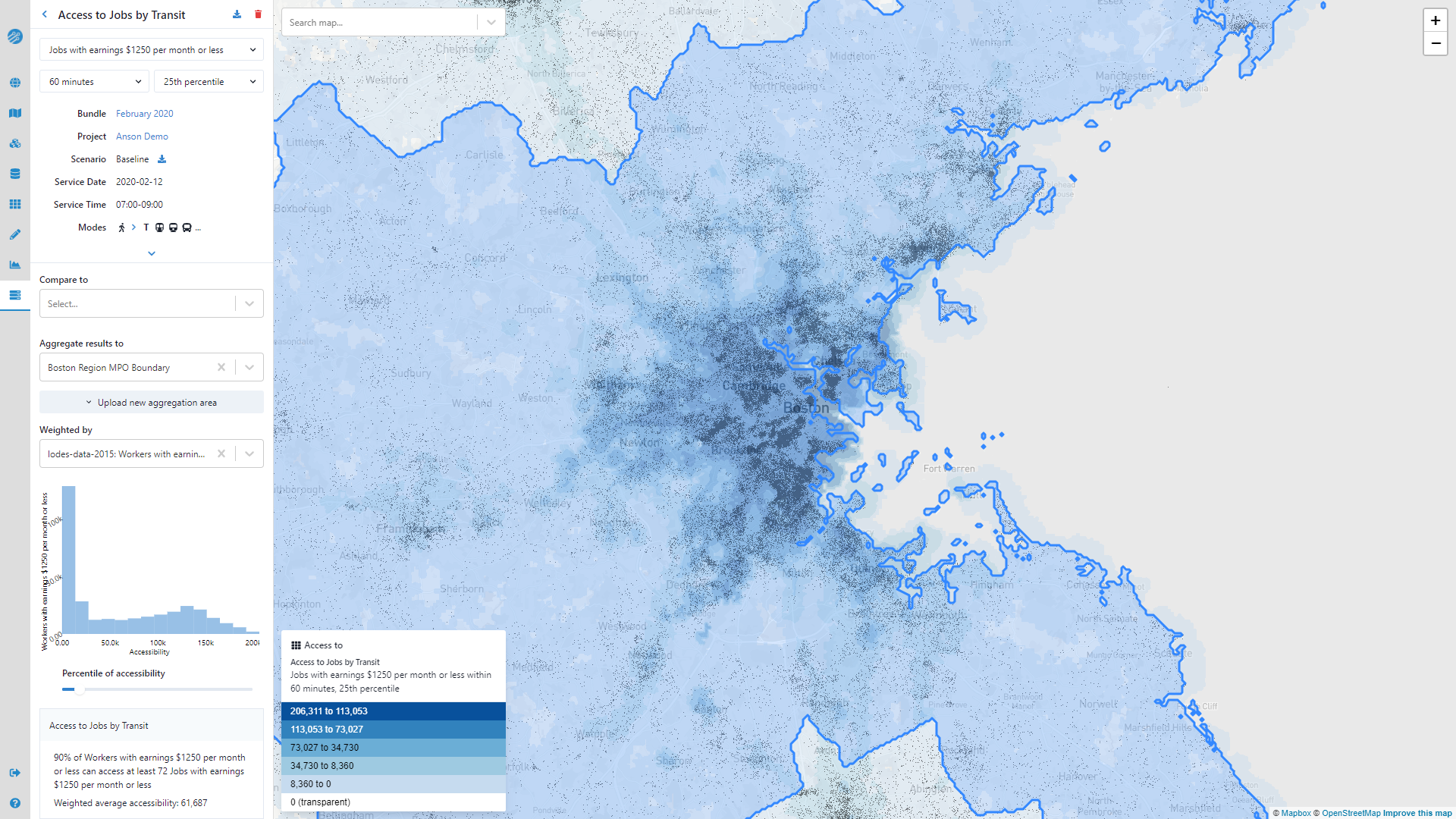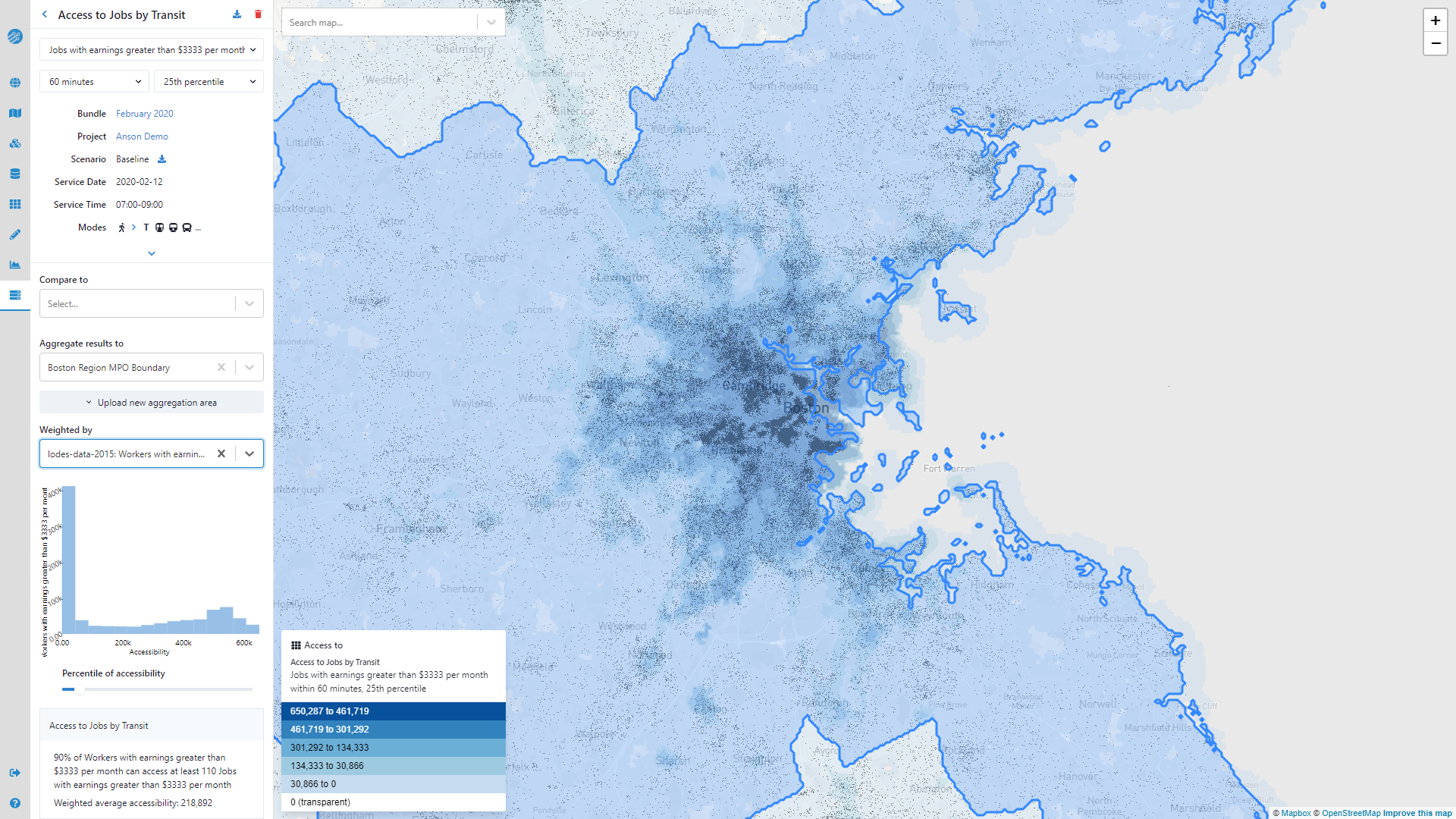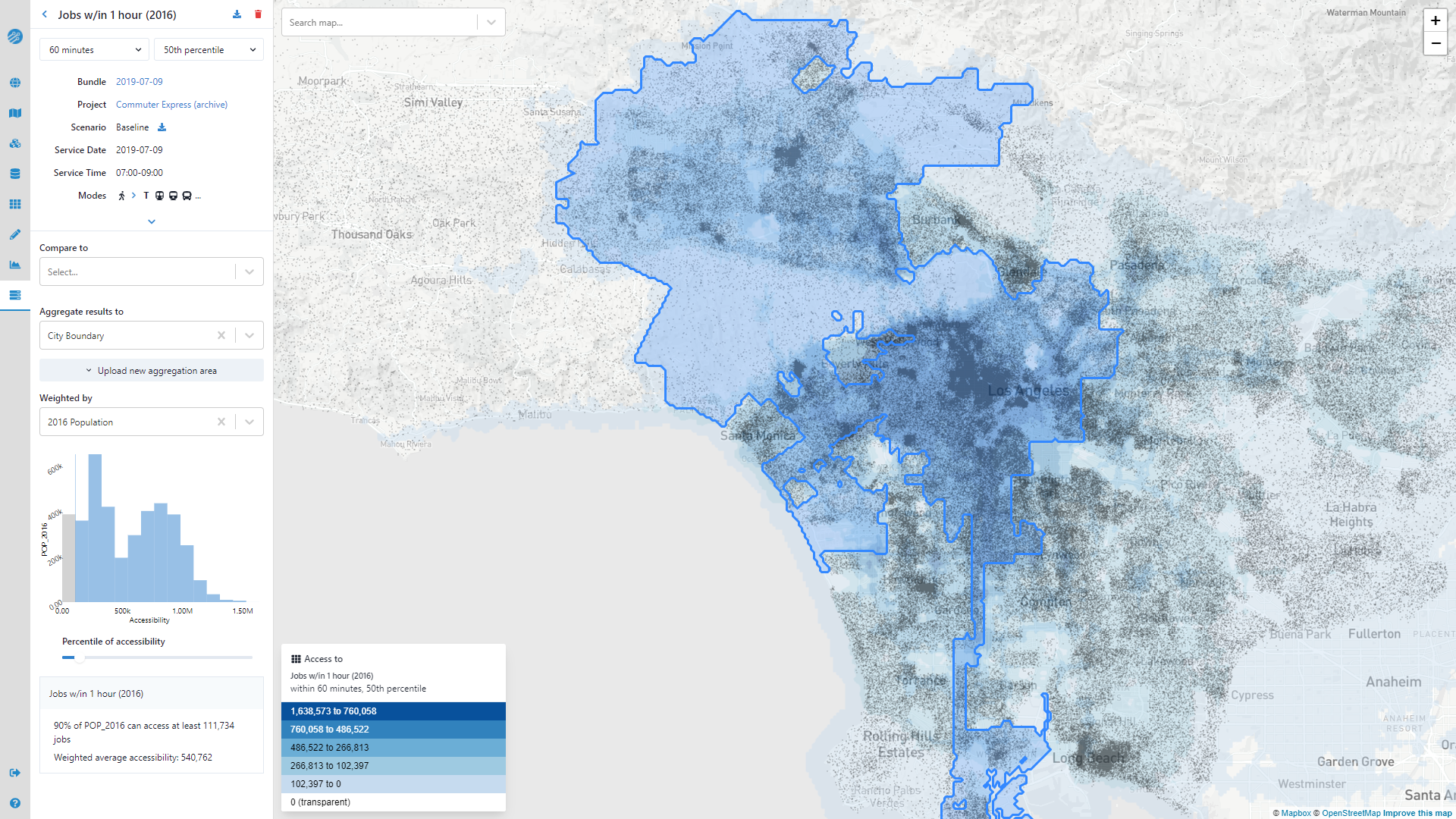Summarize results for jurisdictions and demographic groups
After completing a regional analysis, you may want to summarize results in various ways, such as:
- The 10th percentile, median, and 90th percentile levels of access to jobs in a region, for workers in different demographic groups, as part of an equity analysis
- The weighted average access to healthcare for residents living in different neighborhoods or communities of concern
- The combined effect of changes in destination density, transport networks, and residential density
On a regional analysis results page, selecting appropriate options in the Aggregation Area and Weighted by menus will allow you to answer these questions.
The following examples assume appropriate aggregation areas and opportunity datasets have already been uploaded and are available in these menus. If the options you need are not available, see these instructions for uploading.
Examples
Compare access to jobs for workers in different groups
As part of an equity analysis, a regional planning authority wants to compare how access to jobs varies across earnings/income groups.
- Run a regional analysis, selecting various earnings categories as opportunity datasets.


- View the regional results.
- Select the planning area boundary as the aggregation area.
- Select corresponding opportunity dataset (destination) and weighted by (origin) categories. In this analysis, the average number of low-earning jobs accessible for low-earning workers in the area is 61,687, while the average number of high-earning jobs accessible for high-earning workers in the area is 218,892.




Compare the combined effect of employment and residential densification
A city wants to evaluate how planned land-use changes affect access to jobs, comparing a 2016 baseline to a 2040 horizon year. The planned changes include higher densities for both job locations and residential populations.
- Run regional analyses for access to jobs by transit, selecting 2016 job locations and 2040 job locations as opportunity datasets
- View the regional results for access to jobs in 2016.
- Select the City Boundary as the aggregation area.
- Select 2016 population as the weighted by option.
- Note the results: given the distribution of the residential population and workplaces in the year 2016, the average resident of the city would have access to 540,762 jobs within a 60-minute transit commute. The 10th percentile level of job access is 111,743 (i.e. 90% of the population can access at least that many jobs within a 60-minute transit commute). Adjusting the Percentile of accessibility slider would display results for different percentiles.


- Now view the regional results for access to jobs in 2040.
- Select 2040 population as the weighted by option.
- Note the results: given the distribution of the residential population and workplaces in the year 2040, the average resident of the city would have access to 676,017 jobs within a 60-minute transit commute. The 10th percentile level of job access is 147,051.

